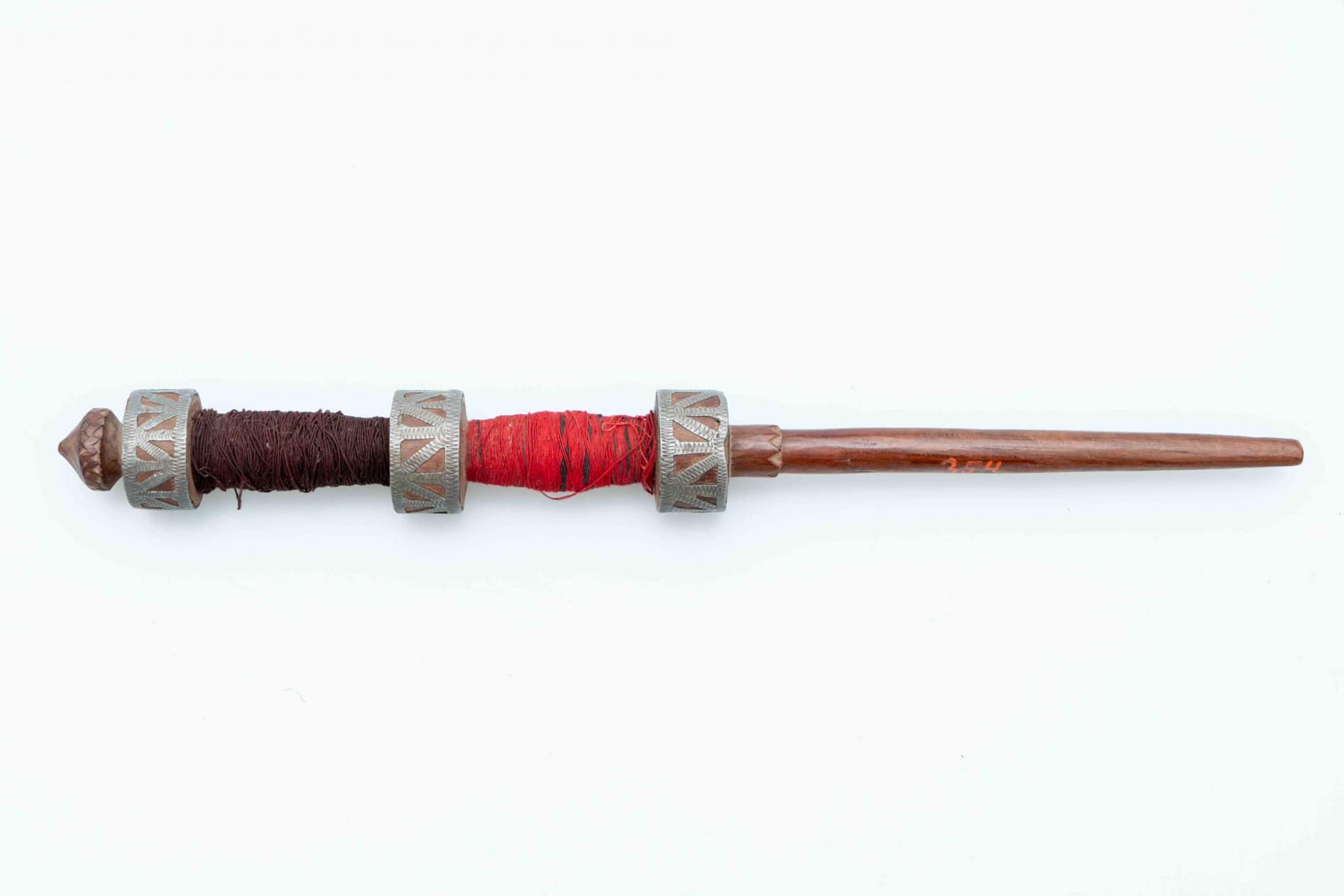
100 years – 100 artefacts
SPINDLE FOR “ARNICI”
As a week artifact, the museum proposes a complex household object, the spindle for “arnici”/ “mosor” (sheave) for “arnici” (twisted and colored cotton thread), decorated with the technique of tying wood in tin, characteristic to the ethnographic area of Pădureni Land. When obtaining a spindle made in this traditional technique, the used wood is usually plum or walnut. The material is segmented by saw, carved with knife and worked on the wood lathe. After the grooves for the pewter inlay are cut out with a chisel, the pewter is poured into the deep grooves, the ridges are cleaned with knife, lightly polished, and the decoration is incised on the surface of the pewter with a straight, narrow chisel or with the nail. The composite-shaped spindle end – successively a flattened cone with a cylinder and a truncated cone – with a 20-mm diameter and 17 mm high is continued with three separating wheels which delimit two thinned areas at the average thickness of the spindle of 40 mm. The wheels, with identical shares, are located at distances of 46 mm and have a diameter of 30 mm and a height of 15 mm. The object continues towards the end with a length of 17mm and a 12mm diameter portion, and then a slightly tapered 10mm diameter towards the end. The total length of this object is 300 mm. The spindle sectors delimited by the three wheels are reserved for spinning “arnici” threads (cotton twisted into a single thread and dyed in different colors), used by women to sew ornaments on shirts, interior textiles, leather pieces, etc. The spindle for “arnici” (inventory no. 354) was purchased in 1923, it comes from the village of Muncelu Mare, Vețel area, Hunedoara county and is exhibited in the museum’s permanent exhibition.
Text: Anca Mocan – museologist MET
Photo: George Ciupag – museologist MET, photo-video specialist



